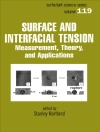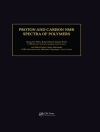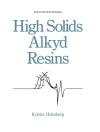This unique book provides an in-depth and systematic description of an integrated approach for innovative functionalized nanomaterials, interfaces, and sustainable supercapacitor fabrication platforms.
The requirement for energy-storing devices that can handle the necessary power for modern day electronic systems and the miniaturization of electronic devices, has sparked the evolution of energy-storing devices in their most portable forms. Integration of mini- or micro-powering devices with tiny electronic devices has led to the simultaneous evolution of nanomaterials and, correspondingly, nanotechnology. The nanotechnology evolution has provided the control and ability to restructure matter at the atomic and molecular levels on a scale of l-100 nm. Nanotechnology primarily aims to create materials, devices, and systems that exhibit fundamentally new properties and functions. As such, nanotechnology and functionalized nanomaterials have proven to be the ultimate frontier in the production of novel materials that have manufacturing longevity and cost-efficiency.
The integration of nanotechnology to produce functionalized nanomaterials and energy storage from electrochemical principles has established a new platform for science and technology. The integration of two technologies does not compromise their fundamentals and principles, but instead results in novel and high-performance supercapacitors.
This book consists of 11 chapters that review state-of-the-art technologies detailing:
- the developments in flexible fabric-type energy storage devices as well as hybrid fabrics for energy storage and harvesting in flexible wearable electronics;
- the role of electrolytes in the development of sustainable supercapacitors and the performance optimizations associated with them;
- green supercapacitors as sustainable energy storage devices;
- the materials used in sustainable supercapacitors, such as novel transition metal oxides, metal-organic frameworks, conductive polymers, and biomass-based, as well as their composites (binary and ternary);
- a discussion on the significance of material selection, emphasizing the properties and characteristics required for sustainable electrode materials;
- how supercapacitors, ultracapacitors, and electrostatic double-layer capacitors (EDLC) offer a more significant transient response, power density, low weight, low volume, and low internal resistance, making them suitable for several applications;
- how sustainable supercapacitors have steadily gained traction due to their potential for non-invasive health monitoring.
Audience
The book is ideal for a broad audience working in the fields of electrochemical sensors, analytical chemistry, chemistry and chemical engineering, materials science, nanotechnology, energy, environment, green chemistry, sustainability, electrical and electronic engineering, solid-state physics, surface science, device engineering and technology, etc. It will also be an invaluable reference source for libraries in universities and industrial institutions, government and independent institutes, individual research groups, and scientists working in supercapacitors.
Об авторе
Basheer Ahamed, Ph D, is a professor in the Department of Physics, B.S. Abdur Rahman Crescent Institute of Science and Technology, Chennai, Tamil Nadu, India. He has 33 years of teaching experience to undergraduate and postgraduate students and more than 20 years of research experience in nanotechnology and laser technology. He has published more than 100 research papers in reputed international journals and has 35 papers in national and international conferences, 21 book chapters, two edited books, and one authored book to his credit. His current research interests include supercapacitors, polymer nanocomposite materials for energy storage and EMI shielding applications, and nanomaterials.
Chaudhery Mustansar Hussain, Ph D, is an adjunct professor and director of laboratories in the Department of Chemistry & Environmental Sciences at New Jersey Institute of Technology, Newark, New Jersey, United States. Dr. Hussain is the author of numerous papers in peer-reviewed journals as well as a prolific author and editor of around 150 books, including scientific monographs and handbooks in his research areas.












